31 start with H start with H
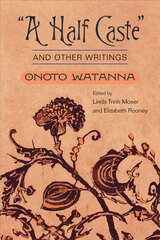
Born Winnifred Eaton to a British father and Chinese mother, Onoto Watanna was the first novelist of Chinese descent published in the United States. Eaton "became" Watanna to escape Americans' scorn of the Chinese and to capitalize on their fascination with all things Japanese.
This volume includes nineteen of Watanna's shorter works, including thirteen short stories and six essays. "A Half Caste," the earliest essay, appeared in 1898, a year before Miss Numé: A Japanese-American Romance, the first of her bestselling novels. The last short story, “Elspeth,” appeared in 1923. Some of Watanna’s fictional characters will remind readers of the delicate but tragic Madame Butterfly, while others foreshadow types like the trickster in Maxine Hong Kingston’s Tripmaster Monkey (where Watanna makes a cameo appearance). Throughout, Watanna tells stories of people very much like herself—capable, clever, and endlessly inventive.

Amid heightened restrictions about what women can and cannot do with their bodies, Lynn Schmeidler’s debut short story collection, Half-Lives, is a humane, absurd, and timely collection of narratives centering on women’s bodies and psyches. Playful and experimental, these sixteen stories explore girlhood, sexuality, motherhood, identity, and aging in a world where structures of societal norms, narrative, gender, and sometimes even physics do not apply. The protagonists grapple with the roles they choose and with those that are thrust upon them as they navigate their ever-evolving emotional lives. A woman lists her vagina on Airbnb, Sleeping Beauty is a yoga teacher who lies in state on the dais of her mother’s studio, and a museum intern writes a confession of her affair in the form of a hijacked museum audio guide.
Half-Lives is the 2023 Rising Writer Prize winner, selected by Matt Bell.
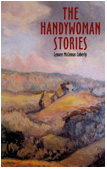
Sometimes it's possible to pick up a book and hear the words being spoken by the characters as if you were sitting across the table from them. This is the sensation you'll have as you read through The Handywoman Stories by Lenore McComas Coberly.
Whether the story describes the civil defense preparations of a small West Virginia town in World War II, the same town years later dealing with an influx of hippies, or the return of a woman to her roots after decades up north, the voices are convincing and true. “I nearly got kicked in the head by a cow before I learned that if you use your full strength pulling milk, you won’t get much milk,” says one. “To see Zevelda the way she was that Sunday is, well, not something you're very likely to see,” says another.
The Handywoman Stories themselves are driven by characters shaped by the place they have lived most all of their lives. They deal with economic depression, mine and war deaths, the arrogance of community leaders, and what might have been, but was not, a stultifying environment. Their tools are astonishing resourcefulness, steadfast friendship, and always humor.
Lenore McComas Coberly has woven together a bittersweet community of strong Appalachian women and men in this remarkable collection. Moving and joyful, these stories are made from the stuff of life.
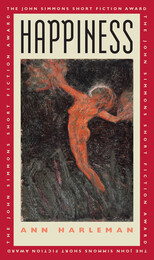
In Ann Harleman's remarkable debut collection, men and women of extraordinary passions look for and sometimes find the hidden heart of ordinary life. Testing themselves and each other, they search for ways to connect. "Understanding," says the troubled voyeur-narrator of "Imaginary Colors," "is the booby prize"; these characters go for experience. Reckless explorers of inner space, they try the limits of their lives.
A gravely ill woman seeks forgiveness from her grown-up daughters for an adulterous past which she does not really regret. A boy watches anxiously—and enviously—while his brother flaunts an interracial love affair in front of their dangerous father. In strike-torn Warsaw during the rise of Solidarity, an American professor and his Polish housekeeper reach toward each other from their respective cages of loneliness. A girl's determined pursuit of her first sexual experience brings her more, and less, than she bargained for.
Harleman combines a clear eye with a generous heart, revealing her characters-misguided, selfish, loving, brave—through a compassionate, often humorous probing of their inner and outer worlds. In "It Was Humdrum" a system analyst hires a detective to find the mother who left him as an infant, while his young wife leaves him daily for afternoon trysts with her Puerto Rican lover. A woman assaulted by a teenage gang escapes physically unharmed but forever changed. The past overtakes a woman who has married for love, not of her husband, but of his small daughter. A greeting card poet pursued by stereotyped images of happiness flees from the woman he loves and the brother he never knew he had.
The supple language of these twelve stories—wise, funny, delighting in the sensuous—makes us feel the beauty and terror of a fully lived life. Harleman's characters, whether they succeed or fail, show us the way to a deeper exploration of our own lives.

The characters in Happy Like This are smart girls and professional women—social scientists, linguists, speech therapists, plant physiologists, dancers—who search for happiness in roles and relationships that are often unscripted or unconventional. In the midst of their ambivalence about marriage, monogamy, and motherhood and their struggles to accept and love their bodies, they look to other women for solidarity, stability, and validation. Sometimes they find it; sometimes they don’t. Spanning a wide range of distinct perspectives, voices, styles, and settings, the ten shimmering stories in Happy Like This offer deeply felt, often humorous meditations on the complexity of choice and the ambiguity of happiness.
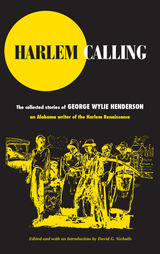
"A very interesting collection . . . both for the way that Henderson's work links the literature of the Harlem Renaissance with the black protest literature of Richard Wright and others, and for Henderson's subject matter and the places that he chose to publish."
--Nellie McKay, University of Wisconsin-Madison
"There is really no other black fiction quite like this that I know of, from the 1920s through the 1930s . . . That Henderson was publishing stories in a newspaper and magazine for the mass market after the period when 'the vogue of the Negro' had allegedly ended is significant in itself. The stories are interesting in relation to both the Negro renaissance and the turn to proletarian fiction."
--George Hutchinson, Indiana University
Harlem Calling collects carefully crafted short stories about life in Alabama, Memphis, and New York City that dramatize the profound ambivalence many blacks felt about their participation in the Great Migration. George Wylie Henderson's tales of the rural South are sometimes nostalgic but also present the hard work and violence of everyday life there, and his stories set in Harlem present the glamour of urban life, while they also are concerned with poverty and social mores.
Henderson enjoyed a widespread popular audience for his periodical fiction in the 1930s and '40s and was a regular contributor to the New York Daily News and Redbook magazine, where the seventeen stories in Harlem Calling were originally published. Until the publication of Harlem Calling, Henderson had been chiefly known for his critically acclaimed 1935 novel about an Alabama farmhand, Ollie Miss, and the 1946 sequel narrating her son's migration to Harlem, Jule. Contemporary critics have favorably compared Henderson's writing to that of Zora Neale Hurston and Langston Hughes, as it captures the life of the black migrant with a style that embraces simplicity and honesty.
Collected here by literary scholar and editor David G. Nicholls, and contextualized with an informative and insightful introduction, Harlem Calling provides a unique perspective on the Harlem Renaissance and on the African American literary tradition.
George Wylie Henderson (1904-65) was born in Alabama, worked in the printing trade, and began writing fiction shortly after graduating from the Tuskegee Institute. He migrated to Harlem with his wife in the late 1920s and published his first story in the New York Daily News in 1932. He also published two novels, Ollie Miss (1935) and Jule (1946). David G. Nicholls is the Director of Book Publications for the Modern Language Association and holds a Ph.D. in English from the University of Chicago. He is author of Conjuring the Folk: Forms of Modernity in African America.
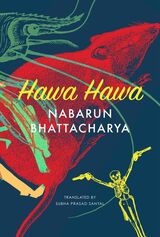
In this wildly inventive collection of Nabarun Bhattacharya’s stories, we meet characters such as a trigger-happy cop in an authoritarian police state, a man who holds on to a piece of rope from a deadly noose, a retired revolutionary thrilled by delusions of grandeur, and people working for a corporation that arranges lavish suicides for a price. Ranging from scathing satires of society to surreal investigations of violence and love, these stories are also a window onto the political and social climate in Bengal, tracing both pan-Indian developments like the 1975 Emergency and local ones like militant-leftist Naxalism and the decades-long Communist reign in the state. Expertly translated from the Bengali, Hawa Hawa and Other Stories is a journey through the mind of one of the most daring countercultural writers of India, one with particular resonance in these chaotic times.
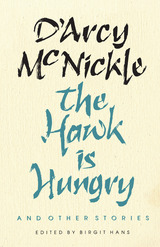
CONTENTS
The Reservation
Hard Riding
En roulant ma boule, roulant...
Meat for God
Snowfall
Train Time
Montana
The Hawk Is Hungry
Debt of Gratitude
Newcomers
Man's Work
Going to School
The City
Manhattan Wedlock
Let the War Be Fought
In the Alien Corn
Six Beautiful in Paris
The Silver Locket

The stories comprising The Healer, Marek Vadas’s first collection, which was originally published in 2006, are steeped in the culture, rituals, and traditions of Africa, blurring the boundaries between dream and reality and peopled with characters whose gender, shape, skin color or even memories may change at a stroke. Nevertheless, Vadas refuses to exoticize this world, and many of the stories, told in pared-down language, blend mythical elements with realistic depictions of harsh living conditions, economic deprivation, and colonial oppression. The narratives unfold from the perspective of their protagonists—children (often orphaned), and men struggling to make ends meet and trying in vain to resist the allure of strong women endowed with magic powers. As a Slovak writer focusing on the African continent, Vadas is a rare voice that helps to build bridges between very different cultures, and now his writing is introduced to the global anglophone readership.
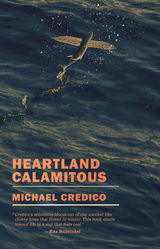
The stories of Heartland Calamitous, often only two or three pages long, reveal a dismal state in which longing slips into passive acceptance, speaking to the particular Midwestern feeling of being stuck. They slip from humor to grief to the grotesque, forming a picture of an all-to-close dystopian quagmire. With this collection, Credico spins a new American fable, a modern-day mythology of the absurd and deformed born of a non-place between destinations.
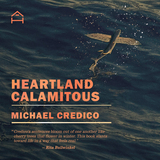
The stories of Heartland Calamitous, often only two or three pages long, reveal a dismal state in which longing slips into passive acceptance, speaking to the particular Midwestern feeling of being stuck. They slip from humor to grief to the grotesque, forming a picture of an all-to-close dystopian quagmire. With this collection, Credico spins a new American fable, a modern-day mythology of the absurd and deformed born of a non-place between destinations.
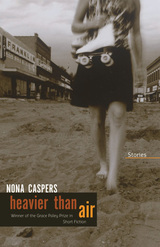
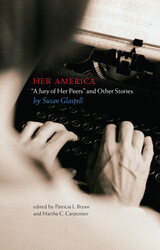
One of the preeminent authors of the early twentieth century, Susan Glaspell (1876–1948) produced fourteen ground-breaking plays, nine novels, and more than fifty short stories. Her work was popular and critically acclaimed during her lifetime, with her novels appearing on best-seller lists and her stories published in major magazines and in The Best American Short Stories. Many of her short works display her remarkable abilities as a humorist, satirizing cultural conventions and the narrowness of small-town life. And yet they also evoke serious questions—relevant as much today as during Glaspell’s lifetime—about society’s values and priorities and about the individual search for self-fulfillment. While the classic “A Jury of Her Peers” has been widely anthologized in the last several decades, the other stories Glaspell wrote between 1915 and 1925 have not been available since their original appearance. This new collection reprints “A Jury of Her Peers”—restoring its original ending—and brings to light eleven other outstanding stories, offering modern readers the chance to appreciate the full range of Glaspell’s literary skills.
Glaspell was part of a generation of midwestern writers and artists, including Sherwood Anderson, Sinclair Lewis, Willa Cather, and F. Scott Fitzgerald, who migrated first to Chicago and then east to New York. Like these other writers, she retained a deep love for and a deep ambivalence about her native region. She parodied its provincialism and narrow-mindedness, but she also celebrated its pioneering and agricultural traditions and its unpretentious values. Witty, gently humorous, satiric, provocative, and moving, the stories in this timely collection run the gamut from acerbic to laugh-out-loud funny to thought-provoking. In addition, at least five of them provide background to and thematic comparisons with Glaspell’s innovative plays that will be useful to dramatic teachers, students, and producers.
With its thoughtful introduction by two widely published Glaspell scholars, Her America marks an important contribution to the ongoing critical and scholarly efforts to return Glaspell to her former preeminence as a major writer. The universality and relevance of her work to political and social issues that continue to preoccupy American discourse—free speech, ethics, civic justice, immigration, adoption, and gender—establish her as a direct descendant of the American tradition of short fiction derived from Hawthorne, Poe, and Twain.
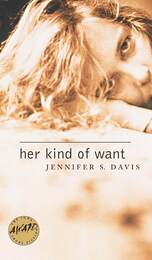
Set mainly in the small towns of Alabama, the stories in Her Kind of Want ache with the relentless longing of the poor, struggling, usually discarded southern women who tell us their lives—lives that seem to revolve around men whose only presence is their absence.
Bebe, Luna, Melly, Little Hula, Dena. These are just a few of the women we meet in Jennifer Davis's award-winning collection. Women who married too fast, had children too young, and drink too much. Yet beneath their unpolished exteriors, these women are flesh and blood, and their wants and needs are as severe and deep as any.
Davis's characters relate their stories in voices as complex and raw as their southern environment. Each tale may sound slightly familiar—an unwanted pregnancy, a fast car flying down a country road—but Davis moves beyond the familiar stories of the rural South to expose the gaps that connect these women, creating startlingly real and vibrant characters.
Although often bleak and sometimes disturbing, Her Kind of Want is a celebration of southern people, their perseverance, their spirit, and their determination to make the ugly beautiful.
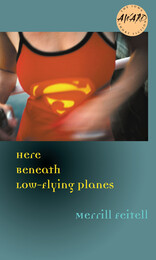
The stories in Merrill Feitell’s award-winning collection, Here Beneath Low-Flying Planes, examine the fleeting and unexpected moments of human connection, reminding us of the indelible impact we have on one another no matter how insignificant or anonymous we might feel under our huge, collective sky.
Feitell’s characters deal with shifting dynamics in relationships—whether they be best friends, lovers, family, or even strangers—that consistently leave them torn between two places or commitments. In the title story, Janie has undergone a painful childbirth experience and her group of friends must pioneer new dynamics while she wonders how to bring her old self back. In “Bike New York!” amid thirty thousand cyclists, a man on the brink of marriage meets a young girl who, in a tiny Brooklyn bakery, affirms both who he has been and who he is going to be. On this short detour from normal life he comes to understand “the funny thing about finding your way in the world. There was a place laid out for you . . . and even as you stepped into it, happy for the chance to rest, you wondered how you ever ended up there.”
Funny, big-hearted, and deft, Here Beneath Low-Flying Planes navigates the reader through the life that happens when you’re planning other things. It is a collection of experiences, roads not taken, and the intense and unforeseen sparks of connection we hope for.
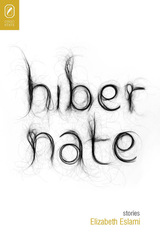
A masterful storyteller as likely to draw blood as to heal, Eslami moves her restless, resilient characters across an uneven landscape toward a hard earned place of peace.

The award-winning stories in David Borofka's Hints of His Mortality focus on the male of the species, on bewildered, guilt-ridden, hypersensitive characters adrift in a sea of changing roles and expectations. Although they yearn for the ideal—whether physical or spiritual—and for that sense of divine connection suggested by Wordsworth's Intimations of Immortality, they usually end up settling for what seems the next best thing: sex or religion.
The amorous scrimmage between male and female in these taut, intense stories is a contest that leaves no one unmarked. The hapless ministers in Borofka's memorable collection find that their daily grind of professional piety leaves them with more questions than answers. The men and boys in Hints of His Mortality are always aware of their flaws, for Borofka's vital characters have the capacity to register the shadows of their every blemish. Like Ferguson of the title story, haunted for twenty years by his failures of conscience, each protagonist experiences the inexorable fallibility of his own nature, agonizes over his moral weakness, and longs for escape from this life in which “our birth is but a sleep and a forgetting." Yet each is redeemed by his ongoing struggle for compassion and understanding.
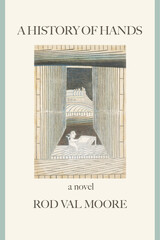
Soon, however, an elderly and possibly criminal doctor, offering free therapy, moves in, much to the dismay of bedridden Virge. While the physician endeavors to restore the patient's hands with a series of highly suspect injections, Virge recovers his sense of autonomy and an urge to escape the suffocating domestic circumstances that have perhaps caused his illnesses in the first place.
A History of Hands is a novel that invites the reader into a richly and eccentrically detailed world where fevered imaginations and dark comedy prevail, but where the determination to escape the ambiguities of illness leads to the equal ambiguities of health and freedom.
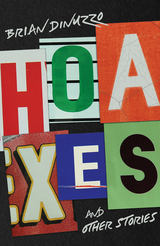
The characters populating Brian DiNuzzo’s debut short story collection may be eccentrics, but at their core they are struggling to get through life, dealing with unmanageable bosses and tedious jobs, and trying to maintain their interpersonal and romantic relationships. These are people seeking to improve their circumstances, people striving for utopia but willing to accept much less. Frustrated and weary, downtrodden and misguided, they still hold out for the dim light of hope.
DiNuzzo navigates ordinary settings—Southern California, South Philadelphia, suburban and city streets, office buildings, derelict apartment complexes, the public library, the airport, the shopping mall—with quirky characters and odd situations. These stories ask us to wonder how falsehoods pervade private life. Through his twelve distinct tales, DiNuzzo asks: What’s real? What’s fake? Does it matter?

In “Prayers of an American Wife,” a Navy wife grapples with loneliness when she discovers that her neighbor, also a Navy wife, is having an affair while their husbands are deployed on the same aircraft carrier. Tensions rise in “The Strangers of Dubai” as a soldier on leave tries to buy his wife a souvenir from an Afghan vendor. After attending eight funerals with fellow military wives whose husbands died in the Iraq war, the protagonist in “Finding the Good Light” divorces her Navy husband and tries to start a new life as a movie star. These, along with the eleven other stories in this collection, explore the emotional landscape of the resilient women who remain on the homefront.
Kelly’s stories offer readers an intimate, eye-opening look into the sacrifices and steadfastness of military family members.
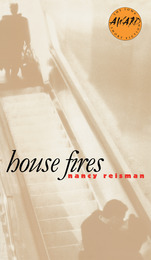
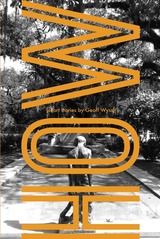
If every story is born of a question—How did we get here? How do you make your arm do that?—the stories in Geoff Wyss’s How search for answers to the mysteries of an astonishing range of characters. The narrator of “How I Come to Be Here at the GasFast” explains why he hasn’t left a truck stop in the two days since he scratched a winning lottery ticket. In “How to Be a Winner,” a sports consultant browbeats a high school football team with his theory of history and a justification of his failed coaching career. Lost in the mazes they’ve made of themselves, Wyss’s characters search for exits on ground that shifts dizzyingly from humor to pathos, from cynicism to earnestness, from comedy to tragedy, often within the same sentence. Although propelled by a razor-sharp, contemporary voice, Wyss’s stories—many set in a New Orleans unknown to television and tourists—have more in common with Chekhov and O’Connor than with “Treme.”
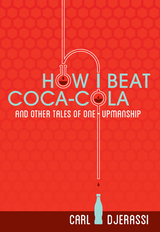
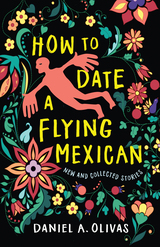
The collection is made up of Olivas’s favorite previously published stories, along with two new stories—one dystopian and the other magical— that challenge the Trump administration’s anti-immigration rhetoric and policies. How to Date a Flying Mexican draws together some of Olivas’s most unforgettable and strange tales, allowing readers to experience his very distinct, and very Chicano, fiction.
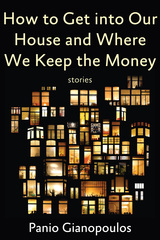
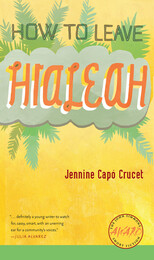
Crucet’s writing has been shaped by the people and landscapes of South Florida and by the stories of Cuba told by her parents and abuelos. Her own stories are informed by her experiences as a Cuban American woman living within and without her community, ready to leave and ready to return, “ready to mourn everything.”
Coming to us from the predominantly Hispanic working-class neighborhoods of Hialeah, the voices of this steamy section of Miami shout out to us from rowdy all-night funerals and kitchens full of plátanos and croquetas and lechón ribs, from domino tables and cigar factories, glitter-purple Buicks and handed-down Mom Rides, private homes of santeras and fights on front lawns. Calling to us from crowded expressways and canals underneath abandoned overpasses shading a city’s secrets, these voices are the heart of Miami, and in this award-winning collection Jennine Capó Crucet makes them sing.
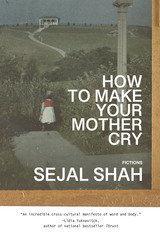
In the eleven linked short stories of How to Make Your Mother Cry, Sejal Shah builds a shrine gleaming with memory and myth. Keys, rocks, photographs, fairy tales, fables, and relics all add texture and meaning to an exploration of growing up and living as a diasporic Gujarati woman in a culture that excuses the behavior of men. Throughout, girls and women contend with the expectations, limitations, and challenges of becoming the heroine of one’s own life.
How to Make Your Mother Cry—Shah’s follow-up to her award-winning essay collection This Is One Way to Dance—continues the rich tradition of innovative feminist work by Claudia Rankine, Leslie Marmon Silko, and Maxine Hong Kingston. By braiding stories and images with fictional letters to a beloved English teacher, the collection defies traditional autofiction, epistolary, and short story conventions. These astonishing stories about friendship and love, resilience and survival establish Shah as an exciting new voice in contemporary fiction.
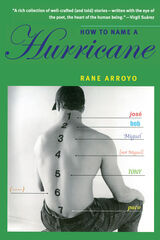
How to Name a Hurricane collects short stories and other fictions depicting Latino drag queens and leather men, religious sinners and happy atheists, working class heroes and cyberspace vaqueros—a parade of characters that invites readers to consider whether one is more authentic a gay Latino than another. Whereas actual hurricanes are given names, the gays given voice in this collection must name themselves—and these narratives in turn reveal something of the "I" of Hurricane Rane. Whether portraying a family gathering as Brideshead Revisited with a mambo soundtrack, recounting the relationship of transvestite Louie/Lois and her bisexual Superman, or bemoaning "feeling as unsexy as an old bean burrito in a 7-11 microwave," Arroyo tracks the heartbeat of his characters through a shimmering palette of styles. Here are monologues, a story in verse, and other experimental forms appropriate to experimental lives—all affirming the basic human rights to dignity, equality, love, and even silliness.
When the AIDS epidemic first hit, many Latino families destroyed any remembrances of their gay and bisexual sons that might betray their pasts to la familia or el pueblo. Arroyo’s writings return the ghosts of those sons to the families, bars, dance clubs, and neighborhoods where they belong. By penetrating to the I’s of narrative hurricanes, these stories honor the survivors of our ongoing cultural storms.
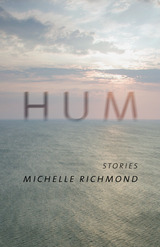
Thirteen years after the publication of her first story collection, The Girl in the Fall-Away Dress, New York Times bestselling author Michelle Richmond returns with Hum, a collection of ten stories that examine love, lust, and loyalty from surprising angles.
In “Hum,” a young couple that is paid to live in a house filled with surveillance equipment becomes “quietly lost to each other,” as the wife’s infatuation with the subject of their surveillance turns to obsession. In “Medicine,” a woman grieving over the death of her sister finds her calling as a manual medical caregiver. In “Boulevard,” a couple who has been trying to have a child for seven years finds themselves in an unnamed country at the height of a revolution, summoned there by the enigmatic H. “Scales,” the story of a woman who falls in love with a man whose body is covered with scales, parses the intersection of pain and pleasure. The narrator of “Lake” must choose whether to walk in the footsteps of her famous grandfather, The Great Amphibian, who disappeared while performing a feat of daring in Lake Michigan. What does it mean to be heroic? How much should one sacrifice in the name of love? These questions and more are explored with tenderness, wit, and unerring precision in Hum.
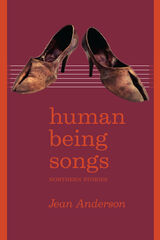
Jean Anderson delicately balances the lyrical and the experimental to tell the stories of hardworking Alaskans—teachers, laborers, dental hygienists, artists—worrying over fairness and equity and meaning, falling in and out of love, and pondering elusive, long-dreamed-of goals. Powered by a rich empathy, Human Being Songs shows us life in Alaska as it’s actually lived today—its successes, failures, and moments of transcendent beauty.
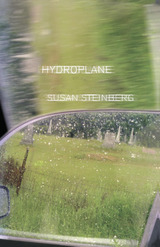
Each of Steinberg's stories builds as if telegraphed. Each sentence glissades into the next as though in perpetual motion, as characters, crippled by loss, rummage through their recollections looking for buffers to an indistinct future.
READERS
Browse our collection.
PUBLISHERS
See BiblioVault's publisher services.
STUDENT SERVICES
Files for college accessibility offices.
UChicago Accessibility Resources
home | accessibility | search | about | contact us
BiblioVault ® 2001 - 2024
The University of Chicago Press









